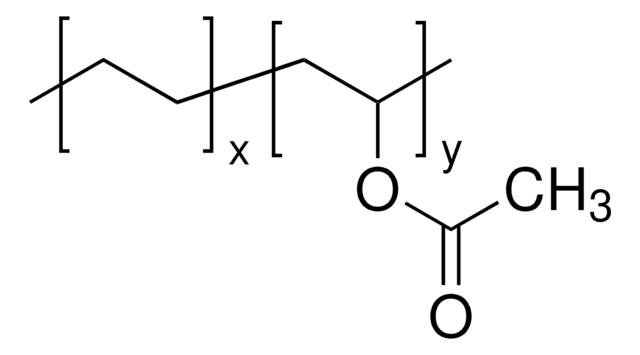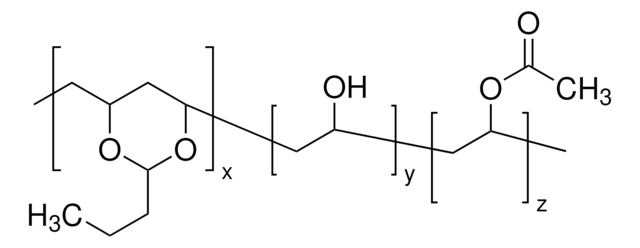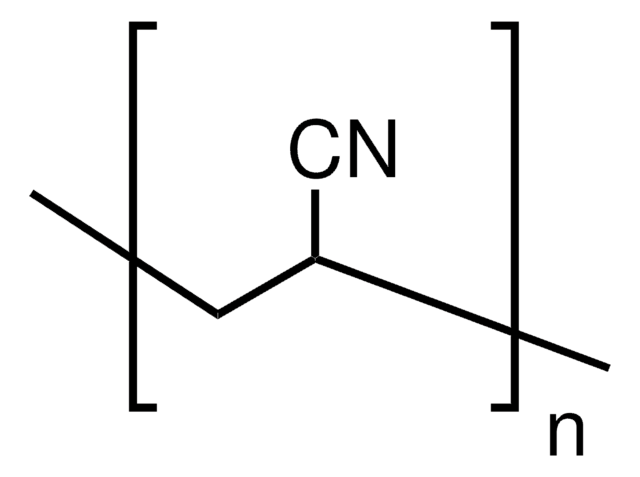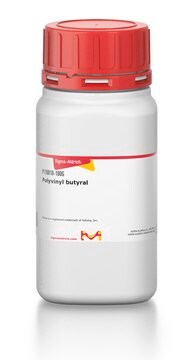428302
Polysulfone
average Mw ~35,000 by LS, average Mn ~16,000 by MO, pellets (Transparent)
Sinónimos:
Poly[oxy-1,4-phenylenesulfonyl-1,4-phenyleneoxy-1,4-phenylene(1-methylethylidene)-1,4-phenylene], Polysulfone resin
About This Item
Productos recomendados
Formulario
pellets (Transparent)
Nivel de calidad
temp. de autoignición
1022 °F
índice de fusión
6.5 g/10 min (343°C/0.3 Mpa)
mol peso
average Mn ~16,000 by MO
average Mw ~35,000 by LS
viscosidad reducida
0.37-0.39 dL/g, 0.2 % (w/v) in chloroform(25 °C)(lit.)
densidad
1.24 g/mL at 25 °C (lit.)
cadena SMILES
CC(C)(c1ccc(O)cc1)c2ccc(O)cc2.Oc3ccc(cc3)S(=O)(=O)c4ccc(O)cc4
InChI
1S/C15H16O2.C12H10O4S/c1-15(2,11-3-7-13(16)8-4-11)12-5-9-14(17)10-6-12;13-9-1-5-11(6-2-9)17(15,16)12-7-3-10(14)4-8-12/h3-10,16-17H,1-2H3;1-8,13-14H
Clave InChI
ZUZZUJNBGCVPLQ-UHFFFAOYSA-N
¿Está buscando productos similares? Visita Guía de comparación de productos
Categorías relacionadas
Aplicación
Características y beneficios
Forma física
Código de clase de almacenamiento
11 - Combustible Solids
Clase de riesgo para el agua (WGK)
WGK 3
Punto de inflamabilidad (°F)
Not applicable
Punto de inflamabilidad (°C)
Not applicable
Equipo de protección personal
Eyeshields, Gloves, type N95 (US)
Elija entre una de las versiones más recientes:
¿Ya tiene este producto?
Encuentre la documentación para los productos que ha comprado recientemente en la Biblioteca de documentos.
Los clientes también vieron
Artículos
Materials Issues in Polymer Electrolyte Membrane Fuel Cells
Nuestro equipo de científicos tiene experiencia en todas las áreas de investigación: Ciencias de la vida, Ciencia de los materiales, Síntesis química, Cromatografía, Analítica y muchas otras.
Póngase en contacto con el Servicio técnico













